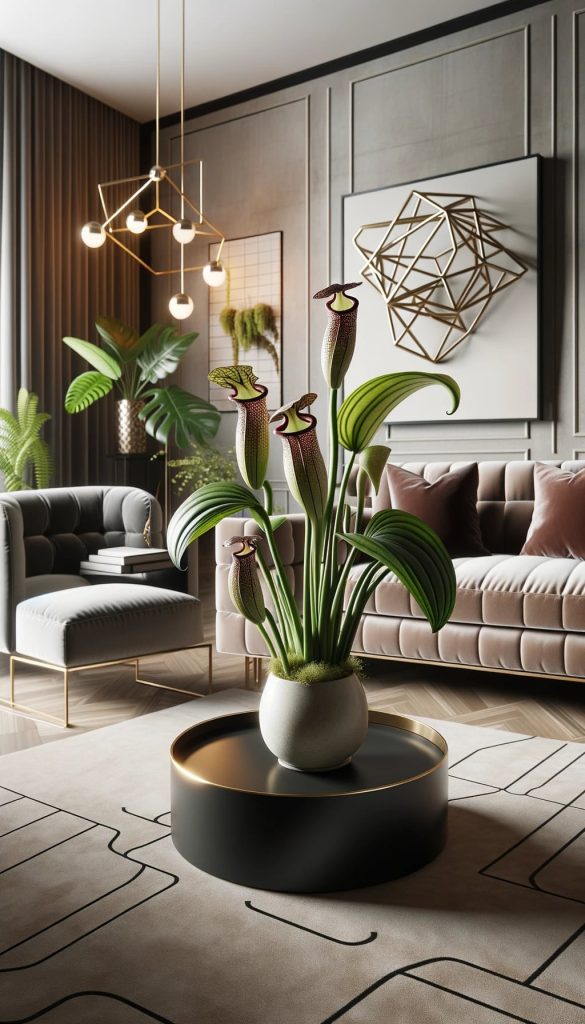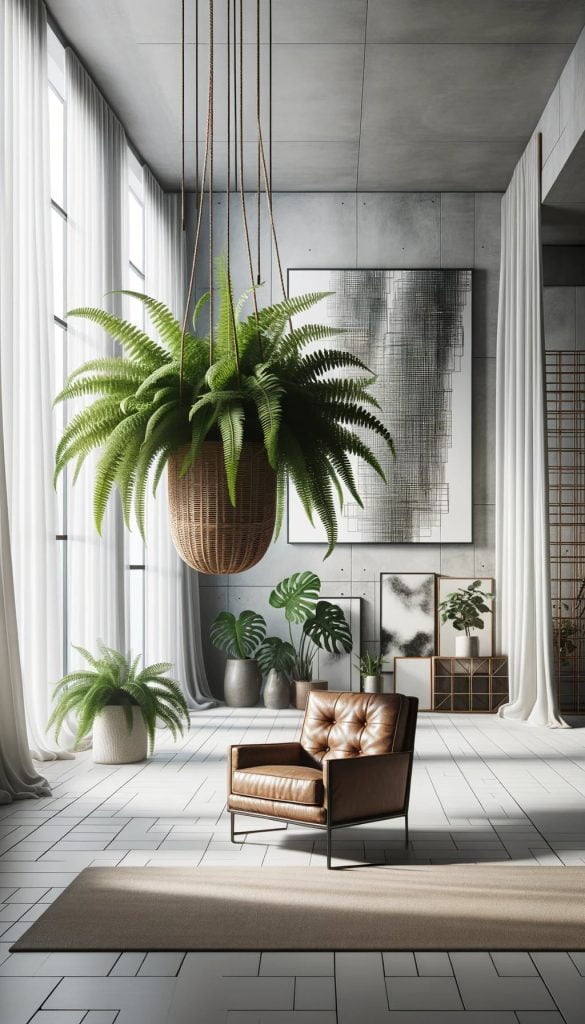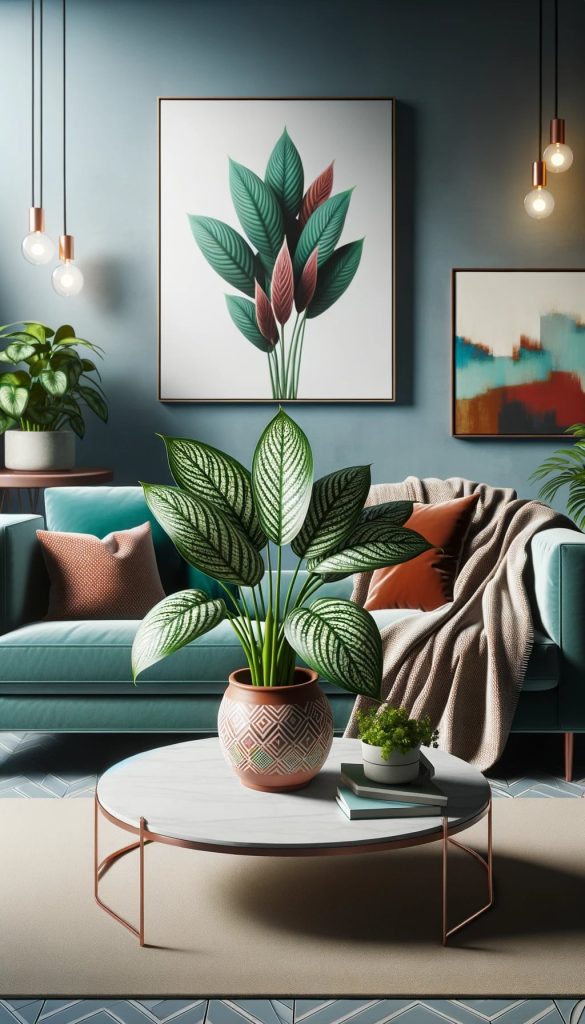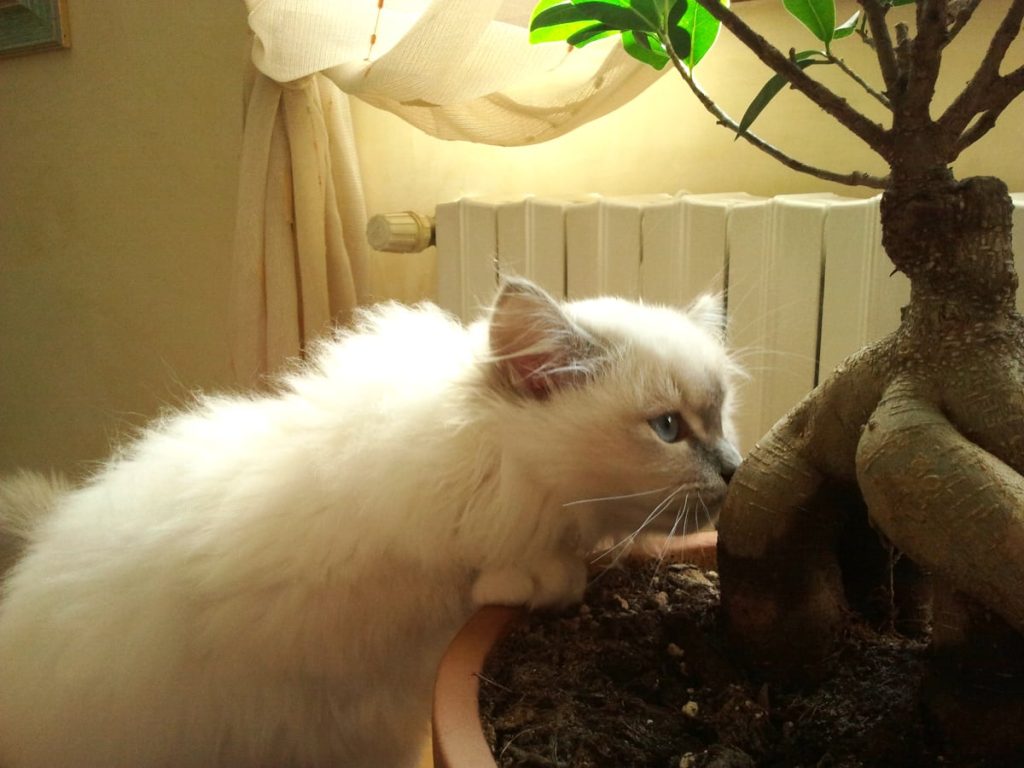If you’re a pet owner like me, you want to know which plants will clean the air without posing a risk to your furry friends. In this blog post, I will go through my favorite air-purifying plants that are safe for cats and dogs.

1. Spider Plant

The spider plant, also known as Chlorophytum Comosum, is one of the most popular and easy to care for air purifying houseplants. NASA tests found it to be excellent at removing formaldehyde, xylene, and toluene from indoor air.
It grows well in bright or indirect light and only needs to be watered when the soil has dried out. With long arching leaves, the spider plant makes a great hanging basket. It produces runners with baby spider plants that can be propagated. Spider plants are non-toxic to cats and dogs.
2. Palms

There are many varieties of pet-safe palm plants that purify indoor air. Parlor palms, areca palms, bamboo palms, and ponytail palms are excellent options.
All palms work well to filter formaldehyde, benzene, and trichloroethylene from the air. They vary in size from small tabletop plants to large floor plants. Palms prefer bright, indirect sunlight and humid conditions.
Their cascading leaves do make them tempting for cats, but they are completely non-toxic if nibbled or ingested by pets.
3. Bromeliads

Bromeliads are tropical plants with striking foliage and colorful flowers. They are very effective at removing benzene, xylene, and toluene from indoor air. Popular bromeliads include the scarlet star, earth star, flaming sword, and pink quill. Bromeliads are safe for dogs or cats.
4. Pitcher Plant

Pitcher plants have unique trumpet-shaped leaves that collect water and trap insects. They help remove formaldehyde from the air and thrive in indirect light with high humidity. Pitcher plants get some of their nutrients from the insects they digest. They are not toxic to dogs and cats if ingested.
5. Gerbera Daisies

Gerbera daisies produce cheerful flowers in colors like red, orange, yellow, white, and pink. They are excellent at removing trichloroethylene, benzene, and formaldehyde from indoor air. Gerbera daisies need lots of light to bloom. They are non-toxic to pets and safe for dogs and cats.
6. Orchids

The orchid, which belongs to the Orchidaceae family, is a diverse and widespread group of flowering plants known for their striking beauty and elegant appearance. They have been cherished for their intricate and colorful flowers. Some varieties of orchids can help in removing xylene and toluene from the air.
Orchids thrive in indirect light and require specific watering routines—usually once a week, but this can vary depending on the type. Orchid flowers can last for weeks, making them a popular choice for indoor decor. Most common house orchids are non-toxic to pets, but always double-check the specific species if you have curious pets.
7. Money Tree

The Money Tree, scientifically known as Pachira aquatica, is often associated with bringing good luck and prosperity. It’s a popular choice for indoor spaces because of its unique braided trunk and lush, green leaves.
This plant can help in removing pollutants like formaldehyde from indoor air. Money Trees prefer bright, indirect light and require moderate watering. The soil should be allowed to dry out between watering. It is considered safe for cats and dogs.
8. Boston Fern

The Boston Fern, Nephrolepis exaltata, is a lush, feathery plant known for its air-purifying qualities. It’s particularly good at removing formaldehyde and xylene from indoor environments.
This fern thrives in indirect light with high humidity. It’s essential to keep the soil consistently moist, making it slightly more demanding in terms of care. With its cascading fronds, Boston Ferns are perfect for hanging baskets or elevated plant stands. They are non-toxic to both cats and dogs.
9. Succulents

Succulents are a diverse group of plants known for their thick, fleshy leaves and stems that store water. This feature makes them incredibly drought-tolerant and perfect for individuals who prefer low-maintenance plants.
They thrive in bright light and require infrequent watering, usually only when the soil is completely dry. While they aren’t specifically known for air purification like some other plants, their ease of care and variety of shapes and colors make them a favorite.
Note: While many succulents are harmless, some, like certain Euphorbias and the Sago Palm, can be toxic to pets.
10. Nerve Plant

The Nerve Plant, also known as Fittonia albivenis, stands out for its striking patterned foliage of green with contrasting pink or white veins. This small, tropical plant prefers indirect light and high humidity, making it a suitable choice for terrariums or bathrooms.
The soil should be kept consistently moist but not waterlogged. While the Nerve Plant isn’t widely recognized for its air-purifying properties, its vibrant appearance makes it a favorite among houseplant enthusiasts. It is considered safe for cats and dogs.
11. Prayer Plant

The Prayer Plant, or Maranta Leuconeura, gets its name from the way its leaves fold up at night, resembling hands in prayer. It features leaves with beautiful patterns, typically in shades of green, red, and cream. This plant prefers indirect light and requires high humidity, which can be achieved by misting or placing it on a tray of wet pebbles.
Like the Nerve Plant, it likes its soil to be kept moist but not soggy. While not primarily known for air purification, its attractive foliage and movement make it a captivating choice for indoor spaces. Prayer Plants are non-toxic to cats and dogs.
Air-purifying plants that are NOT safe for pets

Some other plants identified as toxic or mildly toxic for cats and dogs may offer air-purifying benefits as well. These include:
- Snake Plant
- Red-Edged Dracaena
- Peace Lily
- Heartleaf Philodendron
- Florist’s Chrysanthemum
- Chinese Evergreen
- English Ivy
- Pothos
- Spiderwort
Just make sure to keep those plants out of reach for your pets.
Why Air Purifying Plants?
Indoor air pollution is an often overlooked health concern. In fact, EPA studies have found indoor air quality can be 2 to 5 times worse than outdoor air due to the build up of toxic chemicals like formaldehyde, benzene, trichloroethylene and more.
These hazardous VOCs (volatile organic compounds) are found in many common household items like furniture, cleaning products, building materials, fragrances, and so on. Their accumulation in enclosed spaces can cause short-term symptoms like headaches, dizziness, and eye/throat irritation. And long term exposure is linked to serious illnesses like cancer.
Luckily there’s an easy, natural way to clear these airborne toxins in your home: air purifying plants! Through the process of phytoremediation, certain houseplants can absorb and metabolize indoor pollutants through their leaves and roots. Adding these pet-safe, pollution-busting plants helps create a healthier indoor environment for you and your furry friends.
Benefits of Air Purifying Plants:
- Remove hazardous VOCs like formaldehyde, benzene, trichloroethylene, ammonia, xylene, and toluene from the air
- Improve overall indoor air quality
- Help alleviate allergies, asthma, and irritation caused by indoor pollutants
- Naturally increase oxygen levels
- Enhance mental well-being by connecting you with nature
- Stylish decor that instantly livens up any space
Conclusion
Adding air purifying plants that are safe for your cat or dog can reduce toxins in your home without using harsh chemicals. To safely remove pollutants like formaldehyde, benzene, and trichloroethylene from the air, choose pet-friendly plants like the spider plant, heartleaf philodendron, red-edged dracaena, or parlor palm.

With the right plants, you can breathe easier knowing the air is cleaner for both you and your furry companions.
What are your favorite air-purifying plants? Let me know in the comments!












